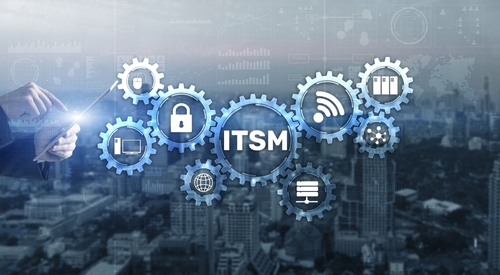ITSM – Don’t forget the basics
01 November 2022

|
During a recent client meeting, I was reminded that not all Service Management functions have a good understanding of the fundamental capabilities of the ServiceNow platform, and their basic Service Management processes – Incident Management, Problem Management, and Change Management with an element of CMDB – are far from mature. The conversation took me back fifteen years to when I joined a leading insurance company to resolve the challenges they faced due to inefficient Change Management processes. That was where I had my initial introduction to the ServiceNow Platform. ServiceNow was in its infancy in the UK, but it soon became clear to me this tool would not only radically transform the Change Management processes that I and many others in Service Management were responsible for, but it would also transform the wider Service Desk function around Incidents, Problems, and Requests. Since then, I have seen ITSM remain the primary reason many organisations adopt the ServiceNow platform, with implementations centred around these fundamental ITIL processes. And when we see the richness of the ServiceNow platform and its enhanced capabilities across the enterprise, it is easy to forget how much it has evolved since its UK debut in 2008. But over the years, it has become all too easy to lose sight of the basics of what most organisations are trying to achieve when responding to end user or customer demands of IT services. Now, my recent client conversation is not unusual. Since that meeting, I have discussed this point at length with many other organisations, and it is evident that having strong, robust, core ITSM processes continue to elude so many. It is easy to recommend adopting ServiceNow ITSM out of the box, but the environments in which we work have become much more complex and supporting them is more demanding. Therefore, in many cases, the need to configure the platform processes to support local organisational requirements is needed. In some extreme cases, there may even be the need to customise! Of course, we should not be opposed to customisation, but it must be done correctly and should always be a last resort. Change Management is linked more than ever to DevOps and agile methodologies and covers cloud and hybrid IT estates. For example, Incident Management is critical to how organisations are perceived by their customers and the broader market, with increased emphasis on integrating instances into service and application models that automate communications and tasks. Organisations must get the core foundations of ITSM right before rushing to implement the latest functionality on offer from ServiceNow and get attracted to the bright lights of the broader platform and enterprise capability. Getting the ITSM basics right underpins all that follows and will influence the real business benefits of everything that is built upon it. ServiceNow said -” Today’s IT organisations need to not only deliver fast and personal services at scale but also constantly pivot to meet any challenges that arise in an always-changing world. They need immediate awareness of potential hurdles and the agility to rapidly adapt and respond to whatever is thrown their way. Powerful, smart tools and information can enable them to maximise performance, efficiency, productivity, and responsiveness quickly. However, they also require solutions that give teams access to complete and relevant data to solve problems and support strategic decision-making. And customers and workers want solutions to help get answers to common questions without bogging down service teams.” Deliver smart, responsive IT services in an always changing world with ITSM Pro – ServiceNow Whitepaper. So, take a minute to turn your eyes away from ITOM, IRM and the broader aspects of platform functionality. Are your core ITSM processes mature enough to support your wider adoption and investment in your Service Management practices?
Lewis Martin – KA2 Head of Enterprise Service Management
For more information about ServiceNow ITSM or to get in contact with Lewis, click the link below |